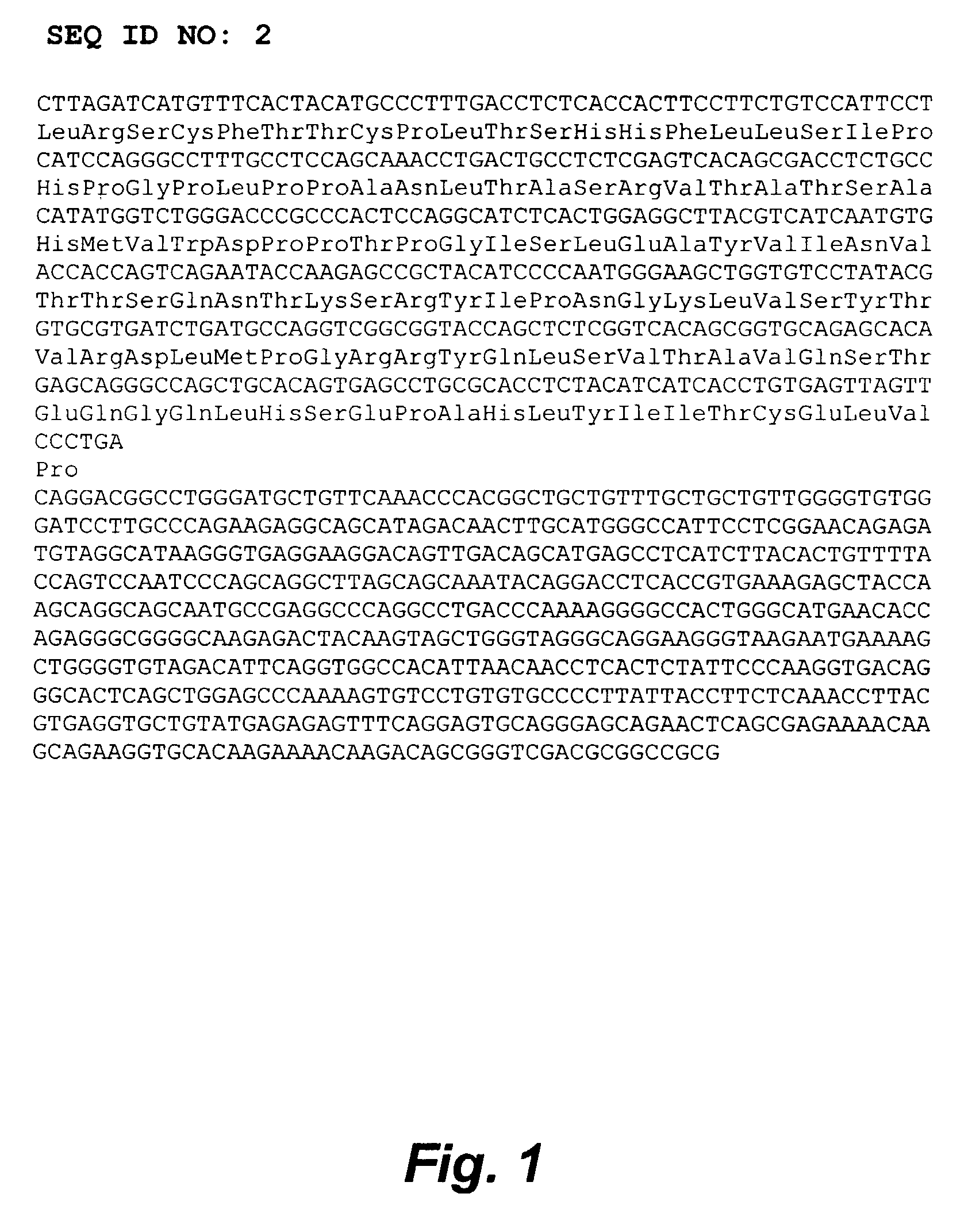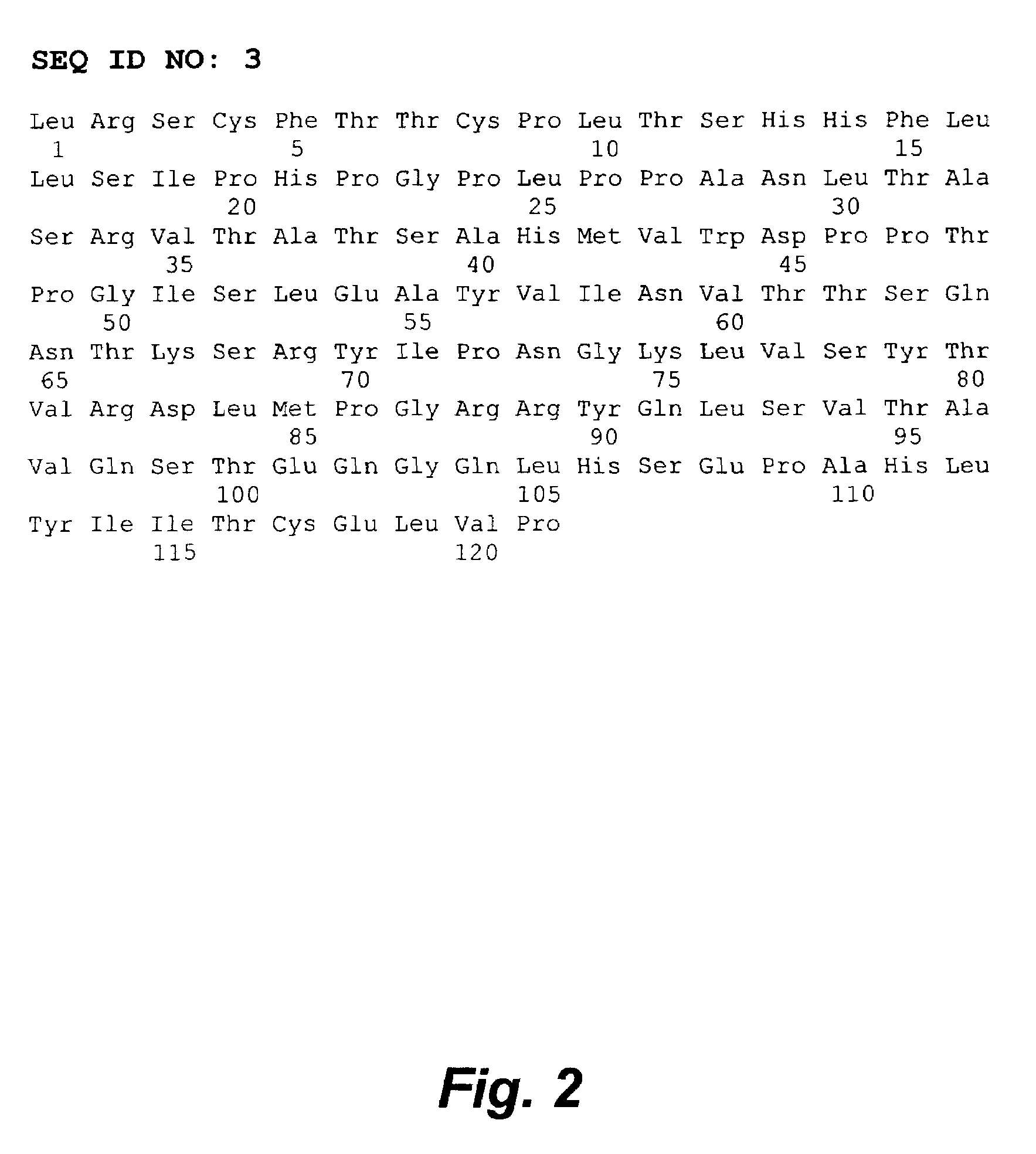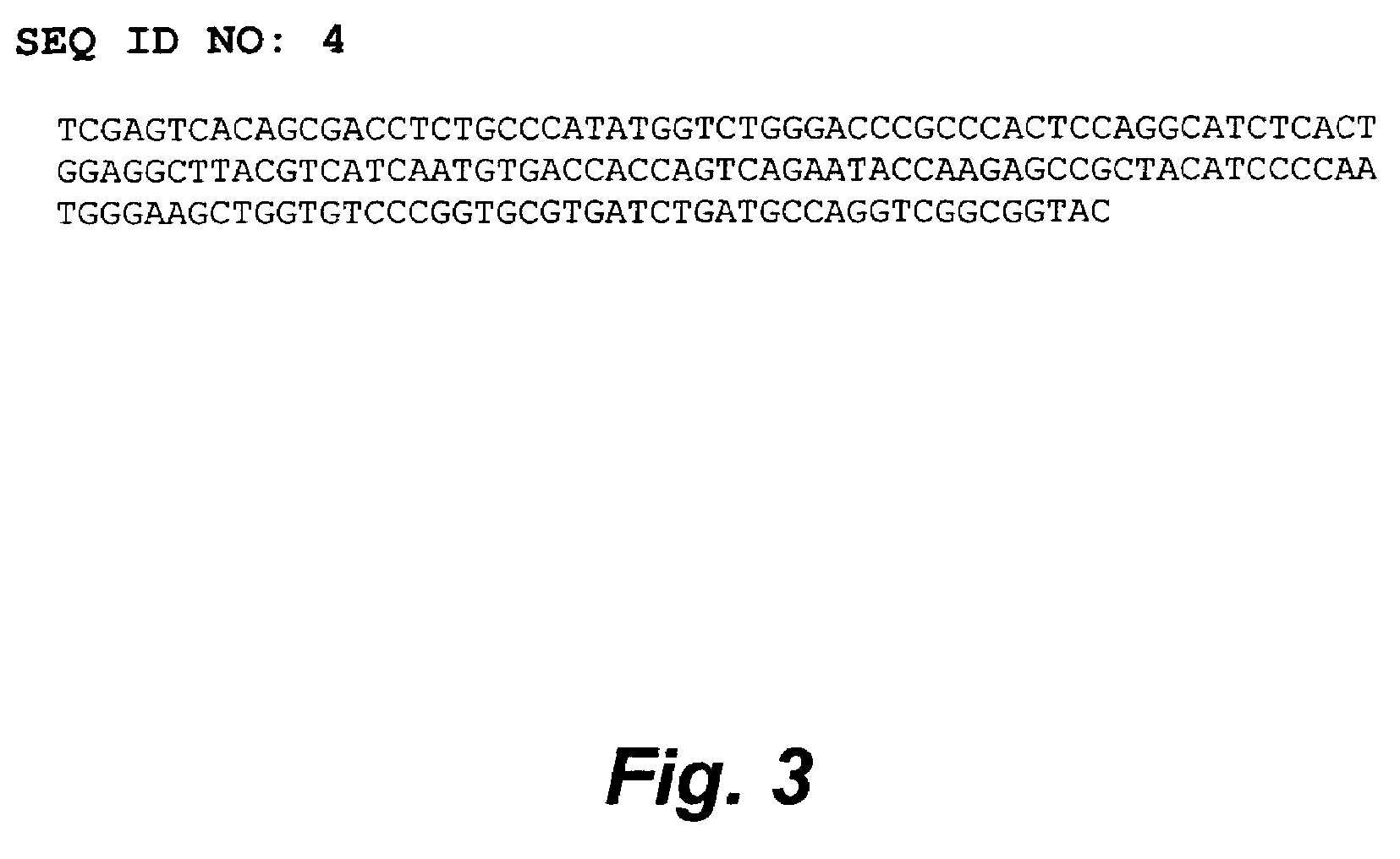Insulin-responsive DNA binding protein-1 and methods to regulate insulin-responsive genes
a technology of dna binding protein and insulin-responsive genes, which is applied in the field of insulin-responsive sequence dna binding protein (irsbp) gene, can solve the problems of difficult identification of specific diabetes-related genes, high incidence of diabetes, and significant economic burden, and achieve the effect of relieving the symptomatic effects of diabetes
- Summary
- Abstract
- Description
- Claims
- Application Information
AI Technical Summary
Benefits of technology
Problems solved by technology
Method used
Image
Examples
example 1
Cloning of cDNAs Encoding IRSBP
[0275]An isolated nucleic acid with the IRE associated with the IGFBP-3 gene and comprising the nucleotide sequence SEQ ID NO: 1 was multimerized as follows. Two antiparallel oligonucleotides, one representing the sense strand of SEQ ID NO: 1, and the other its antisense complement were annealed. The resulting double-stranded DNA was phosphorylated with T4 polynucleotide kinase, concatemerized with T4 DNA ligase at 22° C. for 5 minutes, and electrophoretically fractionated on a polyacrylamide gel. A fragment containing three contiguous copies of the annealed oligonucleotides was inserted into the pHISi reporter vector (Clontech, Palo Alto, Calif.), and transformed into the yeast Saccharomyces cerevisiae strain YM4271 (Clontech, Palo Alto, Calif.).
[0276]Southern blotting confirmed the integration of the multimerized IRE nucleic acid sequence into the yeast genome. Southern blotting was carried out using prehybridization and hybridization buffers contain...
example 2
Sequencing of cDNA Clones
[0286]Single-strand sequencing of cDNA clones use an Applied Biosystems Automated DNA Sequencer and a PCR-based fluorescent dideoxy method, according to the recommendations of the manufacturer. The partial rat IRDBP-1 cDNA clone 52 (SEQ ID NO: 2) is shown in FIG. 1. The longest open-reading frame amino acid sequence derived from SEQ ID NO: 2 is SEQ ID NO: 3, as shown in FIG. 2.
example 3
Expression of Clone 52 mRNAs Using Northern Blot Analysis
[0287]Total RNA was isolated from cultured hepatic non-parenchymal cells using a Tri-Reagent Kit (Molecular Research Center, Cincinnati, Ohio) according to the manufacturer's protocol. Clone 52 cDNA (SEQ ID NO: 2) containing the 952 bp cDNA nucleic acid obtained from the yeast one-hybrid screen as described in Example 1, was random primer labeled with [32P] dCTP and used as a probe to hybridize with RNA electrophoresed on 1.2% formaldehyde-agarose gel using protocols described by Ausubel et al. (1993) and incorporated herein by reference in its entirety, as shown in FIG. 20.
[0288]Northern analysis showed that hepatic cells expressed an mRNA species of at least 5.0 kb in length. Densitometric analysis of IRDBP-1 expression normalized to β-actin expression showed that IRDBP-1 expression levels were highest in the brain and muscle, followed by liver, small intestine, kidney, subcutaneous fat, and spleen, as shown in FIG. 21B. Tis...
PUM
| Property | Measurement | Unit |
|---|---|---|
| temperature | aaaaa | aaaaa |
| temperature | aaaaa | aaaaa |
| pH | aaaaa | aaaaa |
Abstract
Description
Claims
Application Information
 Login to View More
Login to View More - R&D
- Intellectual Property
- Life Sciences
- Materials
- Tech Scout
- Unparalleled Data Quality
- Higher Quality Content
- 60% Fewer Hallucinations
Browse by: Latest US Patents, China's latest patents, Technical Efficacy Thesaurus, Application Domain, Technology Topic, Popular Technical Reports.
© 2025 PatSnap. All rights reserved.Legal|Privacy policy|Modern Slavery Act Transparency Statement|Sitemap|About US| Contact US: help@patsnap.com



